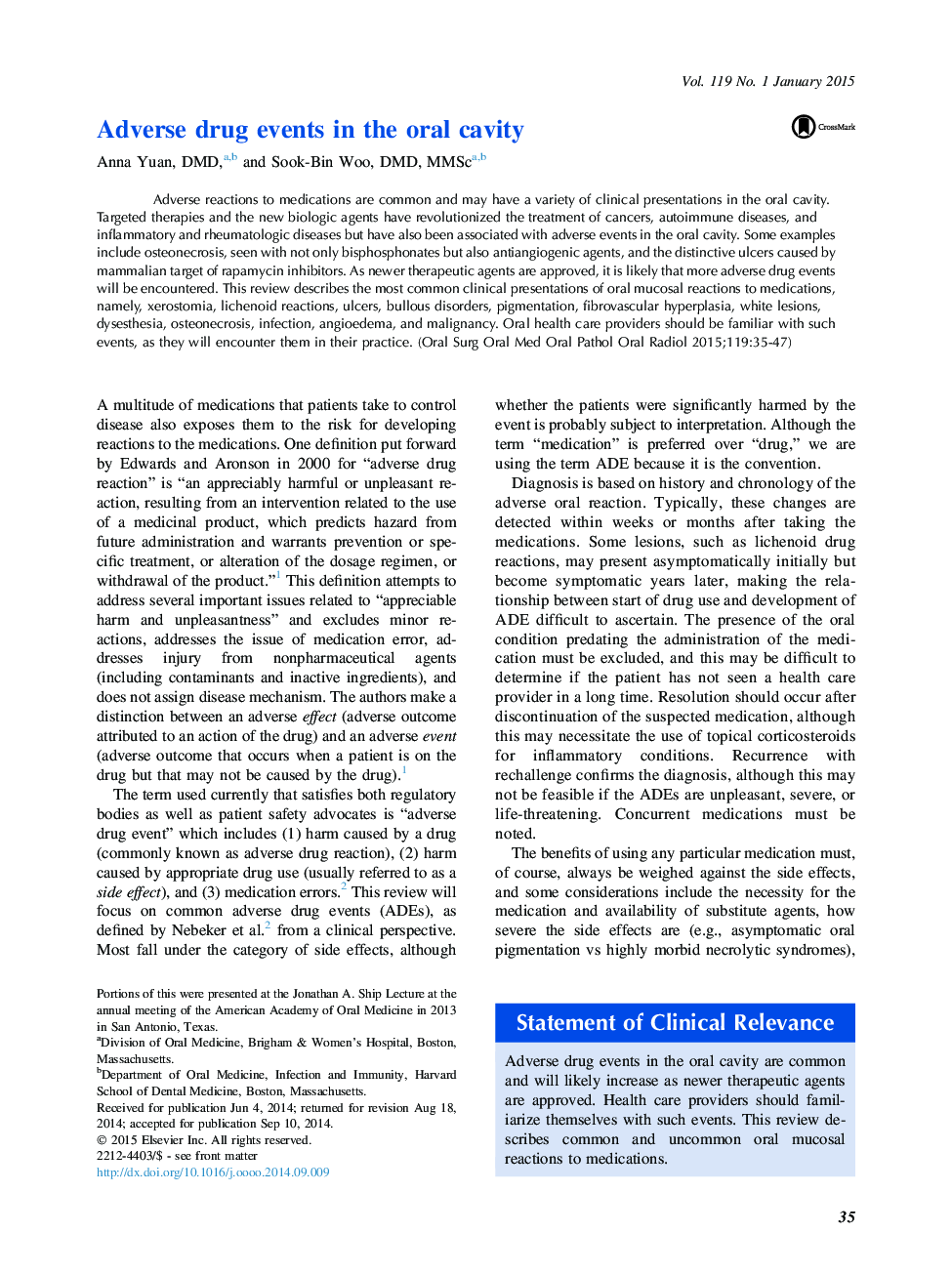| Article ID | Journal | Published Year | Pages | File Type |
|---|---|---|---|---|
| 6056710 | Oral Surgery, Oral Medicine, Oral Pathology and Oral Radiology | 2015 | 13 Pages |
Abstract
Adverse reactions to medications are common and may have a variety of clinical presentations in the oral cavity. Targeted therapies and the new biologic agents have revolutionized the treatment of cancers, autoimmune diseases, and inflammatory and rheumatologic diseases but have also been associated with adverse events in the oral cavity. Some examples include osteonecrosis, seen with not only bisphosphonates but also antiangiogenic agents, and the distinctive ulcers caused by mammalian target of rapamycin inhibitors. As newer therapeutic agents are approved, it is likely that more adverse drug events will be encountered. This review describes the most common clinical presentations of oral mucosal reactions to medications, namely, xerostomia, lichenoid reactions, ulcers, bullous disorders, pigmentation, fibrovascular hyperplasia, white lesions, dysesthesia, osteonecrosis, infection, angioedema, and malignancy. Oral health care providers should be familiar with such events, as they will encounter them in their practice.
Related Topics
Health Sciences
Medicine and Dentistry
Dentistry, Oral Surgery and Medicine
Authors
Anna DMD, Sook-Bin DMD, MMSc,
